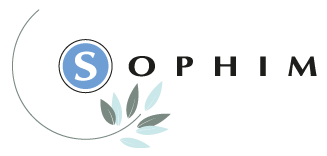Producing a natural-origin cosmetic ingredient relies on a meticulous process. Purification, one of the final stages, is essential to deliver a product that meets your quality standards, with optimal purity and sensory properties tailored to consumer expectations. At Sophim, the purification of squalane, a compound derived from olives, reflects both our commitment to sustainable development and our expertise in green chemistry. Discover the production stages of Phytosqualan, with a focus on our purification methods.
Squalane: a natural cosmetic ingredient derived from olives
Squalane is a derivative of squalene, a lipid belonging to the triterpene class that is naturally present in humans and many animals. Certain plants, such as olives, also contain high levels of this compound. In humans, squalene is a key component of the skin’s lipid barrier, contributing its moisturizing and protective properties.
Squalene: a key component of our skin
Squalene holds increasing importance in the cosmetics industry, recognized for its numerous benefits. This is attributed to its natural presence in human sebum, which protects the skin and regulates hydration. Sebum contains approximately 10–15% squalene in adults, making it an essential component of the stratum corneum.
Extracting squalene and its transformation into squalane
Squalene (C30H50), due to its unsaturated structure, is slightly more prone to oxidation, limiting its direct use in cosmetic formulations. To overcome this constraint, the cosmetics industry prefers squalane (C30H62), a saturated hydrocarbon obtained through hydrogenation, whose chemical stability minimizes degradation risks and ensures better product preservation.
Sophim’s conversion of squalene into squalane (C30H62) adheres to green chemistry principles, leveraging long-standing expertise and specific innovations:
- Esterification: saponifiable molecules are combined with biodegradable glycerol, forming denser molecules called triglycerides. This initial step facilitates the subsequent separation of unsaponifiables such as squalene.
- Distillation: using volatility differences, light squalene molecules are separated from heavier triglycerides, producing a concentrate rich in squalene.
- Saponification: saponifiable residues are transformed into soap salts through a reaction with potash, yielding an oil containing 90% squalene.
- Hydrogenation: this critical step converts squalene into squalane by saturating its double bonds with hydrogen, making the compound stable and oxidation-resistant.
- Purification: this final step ensures a nearly pure product, ready to integrate into your cosmetic formulations.
By-products from various production stages are repurposed in an upcycling approach.
Understanding the purification process
Purification aims to achieve an odorless and colorless product.
After hydrogenation, the product still contains impurities such as paraffins, odor molecules, and colored pigments. Sophim employs three complementary techniques to ensure their removal:
- Winterization: controlled cooling precipitates paraffins, while squalane remains liquid. The extracted paraffins are repurposed as natural alternatives to mineral waxes, reinforcing our commitment to a circular economy approach.
- Stripping: continuous distillation combined with countercurrent nitrogen injection removes odor molecules, ensuring the olfactory neutrality essential for many cosmetic formulations.
- Silica Gel Purification: semi-continuous silica gel filtration removes colored pigments, yielding a clear and stable squalane, even at low temperatures.
These successive purification steps result in odorless and colorless squalane, suitable for the most demanding formulations.
Sophim: a producer of natural cosmetic ingredients
Since 1996, Sophim has been developing cosmetic ingredients for brands seeking natural-origin compounds: emollients, texturing agents, fixatives, vegetable oils, and cosmetic butters.
Based in France and Spain, we export our range worldwide. Our COSMOS NATURAL, COSMOS ORGANIC, and NATRUE certifications meet the expectations of your most committed consumers, while halal certification ensures ingredients that comply with specific market requirements.
Would you like to learn more about Phytosqualan or another Sophim reference? Interested in receiving samples of our demonstration formulas? Contact our team at +33 (0)4 92 33 17 17 or submit an inquiry online.






